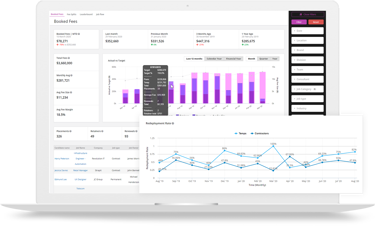
スプレッドシートもIT知識も不要
50を超えるベストプラクティスが詰まったライブラリ。
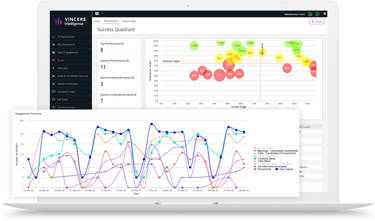
管理をさらにシンプルに
コンサルタントごとの強みと弱みを把握して、意味のあるディスカッションとより的確な指示を。
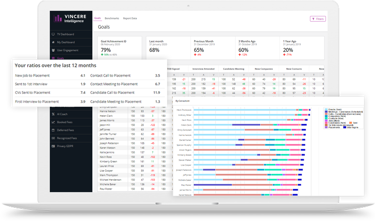
フィルター検索機能
ブランド、支店、チーム別…
フィルター機能を使って必要なデータをすばやく抽出。
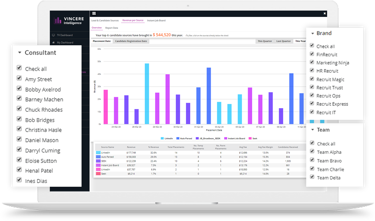
いま起きてることを、360度みわたせる
事業開発、パフォーマンストラッキング、パイプライン管理、手数料計算から売上予測…
Vincereインテリジェンスなら瞬時にアンサーをくれる。
カスタム可能な分析・レポート
Vincereの分析モジュールならほしいレポートがすぐに見つかる。
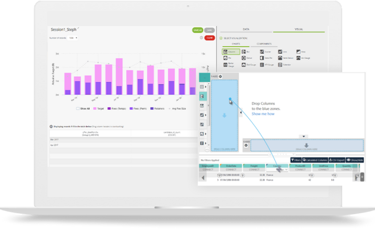
![]()
ダッシュボードとリーダーボードがきちんと機能している為、あらゆる情報が「見える化」できます。
その為マネージャーだけでなくコンサルタントも自分が今どういう状況で、何をするべきかが即座にわかるようになっています。

ロバート・クワーク 様
Tempting Ventures 社 マーケティング部長
ひとつのプラットホームで、
多くのビジネスを創り出す。
Recruitment OS?